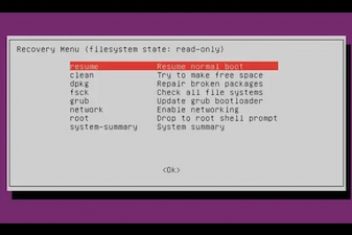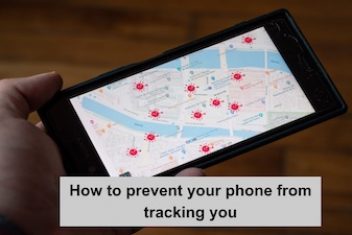Digital Threats on the Rise
The numbers don’t lie: cyberattacks have surged by nearly 50% over the last two years, crippling organizations in every industry. The explosion of remote work, cloud adoption, and IoT devices has created a perfect storm for attackers, expanding the digital battlefield. What used to be a guarded fortress is now an exposed web of endpoints and cloud platforms begging to be breached. Relying on outdated, single-layer defenses? That’s a recipe for disaster. Modern threats evolve too quickly, hitting where businesses are least prepared. Staying static is surrender.
Identifying Vulnerabilities in an Interconnected Ecosystem
Phishing emails, supply chain hacks, zero-day exploits—these aren’t new, but they’re more dangerous in a connected world. Attacks target two constant vulnerabilities: human error and poor configurations. Clicking just one malicious link or neglecting a patch can disrupt operations across entire ecosystems. In today’s highly interconnected networks, no system exists in isolation. One breach affects everyone. Interdependencies increase the impact, turning small mistakes into major disasters. Identifying weak points isn’t just a task. It’s essential for survival.
Building a Layered Cyber Defense Framework
Defense in depth. If that’s not in your vocabulary, you’re already behind. Segment your networks. Lock down identities with rock-solid access controls. Encrypt everything—at rest, in transit, always. Piecemeal solutions don’t cut it anymore. Building a cohesive, multi-tiered approach is critical. Modern frameworks like the NIST Cybersecurity Framework or ISO 27001 provide blueprints that actually work. For a deeper dive into building durable systems, explore online cybersecurity. Multi-layered defenses keep adversaries guessing. The goal isn’t perfection. It’s making their job painfully difficult.
Proactive Measures with Real-Time Threat Intelligence
Static defenses are dead. The battlefield demands real-time insights and swift action. Threat feeds and automated monitoring tools bring live context to your security processes, arming you with actionable data. Indicators of Compromise (IoCs) detected today prevent breaches tomorrow. Open-source options like MISP are great, but don’t ignore robust commercial solutions—it’s a mix that works. Without this level of visibility, attackers will exploit blind spots faster than you can act. Reactive strategies delay defeat, but proactive intelligence wins wars.
Read: Securing Your Home’s Digital Frontier: Essential Tips for Preventing Cyber Intrusions
Optimizing Security Without Sacrificing Productivity
Security that frustrates users always backfires. Frictionless solutions, like single sign-on and adaptive multi-factor authentication, deliver both usability and protection. Picture this: employees log in once; every subsequent layer of access adapts dynamically based on behavior. Security that works in the background prevents bottlenecks that cripple workflows. Just-in-time privileges ensure users don’t have unnecessary access, while periodic reviews stop privilege creep. Streamline it. Complicate it, and productivity pays the price.
Continuous Monitoring and Rapid Incident Response
Always-on vigilance. That’s the baseline. Comprehensive logging, powered by SIEM tools, ensures no anomaly goes unnoticed. But monitoring isn’t enough. Rapid detection means nothing without fast containment. An incident response playbook—covering identification, containment, eradication, and recovery—is non-negotiable. Skip rehearsals like tabletop exercises, and you’ll flail when real threats hit. And when they do, you’ll need crystal-clear communication. Panicked teams leak information and trust. Precision under pressure defines resilience.
Cultivating a Security-First Culture
Your strongest link? People who care. Your weakest? People who don’t. Stop with the outdated training slides. Use phishing simulations, role-based drills, and interactive workshops to turn employees into vigilant defenders. Leadership needs skin in the game too. Clear expectations, incentives, and accountability make security everyone’s business. Track metrics like click-through rates on fake phishing emails or time-to-resolution for incidents. Metrics don’t lie. They’re the mirror exposing whether your culture is thriving or failing.
Anticipating Tomorrow’s Cybersecurity Challenges
Attackers evolve. So must you. AI-driven phishing campaigns morph faster than humans can react. Misconfigured cloud resources create wide-open backdoors. IoT devices multiply vulnerabilities by the millions. Tomorrow’s challenge isn’t brute force; it’s sophistication. Collaboration—industry consortia, data-sharing networks, deep partnerships with academic researchers—lays the groundwork for resilience. Zero-trust architectures and decentralized identity solutions aren’t buzzwords. They’re blueprints. Combating future threats requires innovation backed by hard budgets and bold actions.
Read: Cyber security awareness for silver surfers: How to stay safe online
Charting Next Steps for Sustained Protection
What’s next? The basics matter. Conduct a gap analysis. Update security policies. Introduce recurring, meaningful training cycles. Cybersecurity isn’t a checkbox; it’s a continuous grind requiring precision and stamina. Fail to actively sustain your defenses, and you’ll join the list of breached companies before long. Treat security as a perpetual journey, not a one-off project. The attackers aren’t taking breaks. Why should you?
If you like the content, we would appreciate your support by buying us a coffee. Thank you so much for your visit and support.



